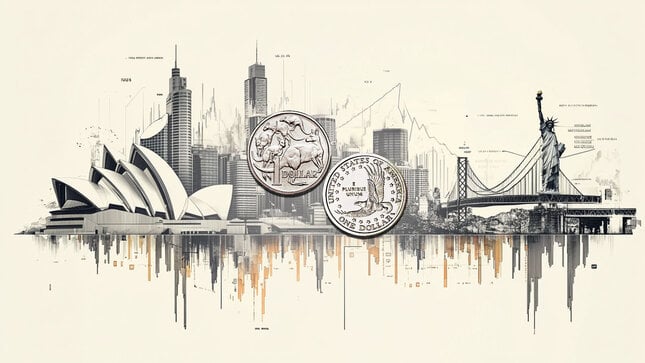- Gold price recovery falters once again near $2,060 ahead of Fed Waller’s speech.
- Middle East geopolitical escalation, higher US Treasury bond yields bump up the US Dollar.
- Gold price confirmed a symmetrical triangle breakout on Monday, upside potential stays intact.
Gold price is challenging the $2,050 barrier early Tuesday, feeling the heat from resurgent US Dollar (USD) demand amid a further escalation in the Middle East geopolitical tensions.
Gold price looks to geopolitics and Fed Waller’s speech
Gold price has turned red for the first time in four trading days, stalling its recovery momentum from three-week lows of $2,013. Gold price is undermined by renewed US Dollar demand across the board, as investors scurry for safety in the Greenback amid intensifying geopolitical tensions in the Middle East.
Risk sentiment took a hit following reports that Iran’s Islamic Revolutionary Guard Corps (IRGC) fired missiles at targets near the US Consulate in Erbil, Iraq. Iranians retaliated against the terrorist attacks this month that killed almost 100 people near the burial site of General Qassem Soleimani.
Meanwhile, Gold price also bears the brunt of rising US Treasury bond yields, as they play catch up after the holiday weekend. The uptick in the US Treasury bond yields also acts as a tailwind to the US Dollar advance.
The Greenback also takes advantage of the market’s concerns surrounding China’s economic outlook, with the Gross Domestic Product (GDP) and activity data coming up on Wednesday.
Attention now turns toward the highly-anticipated speech by the US Federal Reserve (Fed) Governor Christopher Waller due later at 16:00 GMT. Waller is set to speak about the economic outlook and monetary policy at the Brookings Institution, in Washington DC. Audience questions are expected to follow.
During his last appearance, Waller flagged a dovish policy pivot, smashing the US Dollar alongside the US Treasury bond yields. Waller noted that “if inflation consistently declines, there is no reason to insist that interest rates need to remain really high.
Therefore, his comments will hold the key to the market’s pricing of the March Fed rate cut. Currently, markets are wagering roughly 70% odds that the Fed will lower rates in March.
Gold price technical analysis: Daily chart
Despite the pullback from near multi-day highs, the short-term technical outlook for Gold price remains constructive, in the wake of a symmetrical triangle breakout confirmed on the daily chart on Monday.
Gold price closed Monday above the falling trendline resistance at $2,052, charting a bullish technical breakout.
The 14-day Relative Strength Index (RSI) indicator is turning south but holds above the midline, suggesting that any pullbacks in Gold price will be a good buying opportunity.
Gold buyers could find fresh demand at the 21-day SMA resistance-turned-support of $2,047. A daily candlestick close below the latter is critical to reviving the bearish interests.
The next downside target is seen at triangle support of $2,049. Further down, Friday’s low of $2,027 could offer some temporary respite to Gold buyers.
The last line of defense for Gold optimists is seen at the 50-day SMA at $2,020.
On the upside, powerful resistance is seen at around $2,060, above which the static resistance at $2,080 will come into play. If the upbeat momentum regains traction, a retest of the $2,100 barrier cannot be ruled out.
Gold FAQs
Why do people invest in Gold?
Gold has played a key role in human’s history as it has been widely used as a store of value and medium of exchange. Currently, apart from its shine and usage for jewelry, the precious metal is widely seen as a safe-haven asset, meaning that it is considered a good investment during turbulent times. Gold is also widely seen as a hedge against inflation and against depreciating currencies as it doesn’t rely on any specific issuer or government.
Who buys the most Gold?
Central banks are the biggest Gold holders. In their aim to support their currencies in turbulent times, central banks tend to diversify their reserves and buy Gold to improve the perceived strength of the economy and the currency. High Gold reserves can be a source of trust for a country’s solvency. Central banks added 1,136 tonnes of Gold worth around $70 billion to their reserves in 2022, according to data from the World Gold Council. This is the highest yearly purchase since records began. Central banks from emerging economies such as China, India and Turkey are quickly increasing their Gold reserves.
How is Gold correlated with other assets?
Gold has an inverse correlation with the US Dollar and US Treasuries, which are both major reserve and safe-haven assets. When the Dollar depreciates, Gold tends to rise, enabling investors and central banks to diversify their assets in turbulent times. Gold is also inversely correlated with risk assets. A rally in the stock market tends to weaken Gold price, while sell-offs in riskier markets tend to favor the precious metal.
What does the price of Gold depend on?
The price can move due to a wide range of factors. Geopolitical instability or fears of a deep recession can quickly make Gold price escalate due to its safe-haven status. As a yield-less asset, Gold tends to rise with lower interest rates, while higher cost of money usually weighs down on the yellow metal. Still, most moves depend on how the US Dollar (USD) behaves as the asset is priced in dollars (XAU/USD). A strong Dollar tends to keep the price of Gold controlled, whereas a weaker Dollar is likely to push Gold prices up.
Information on these pages contains forward-looking statements that involve risks and uncertainties. Markets and instruments profiled on this page are for informational purposes only and should not in any way come across as a recommendation to buy or sell in these assets. You should do your own thorough research before making any investment decisions. FXStreet does not in any way guarantee that this information is free from mistakes, errors, or material misstatements. It also does not guarantee that this information is of a timely nature. Investing in Open Markets involves a great deal of risk, including the loss of all or a portion of your investment, as well as emotional distress. All risks, losses and costs associated with investing, including total loss of principal, are your responsibility. The views and opinions expressed in this article are those of the authors and do not necessarily reflect the official policy or position of FXStreet nor its advertisers. The author will not be held responsible for information that is found at the end of links posted on this page.
If not otherwise explicitly mentioned in the body of the article, at the time of writing, the author has no position in any stock mentioned in this article and no business relationship with any company mentioned. The author has not received compensation for writing this article, other than from FXStreet.
FXStreet and the author do not provide personalized recommendations. The author makes no representations as to the accuracy, completeness, or suitability of this information. FXStreet and the author will not be liable for any errors, omissions or any losses, injuries or damages arising from this information and its display or use. Errors and omissions excepted.
The author and FXStreet are not registered investment advisors and nothing in this article is intended to be investment advice.
Recommended Content
Editors’ Picks

AUD/USD stays firm near 0.6300 after strong Chinese exports data
AUD/USD is trading well bid near 0.6300 in Asian trades on Monday, opening the week on the front foot. Risk sentiment remains in a sweeter spot following the weekend's news of lower US tariffs on Chinese electronic supply chain and strong Chinese exports data for March. Tariffs talks will remain on the radar.

USD/JPY recovers to 143.00 amid volatile trading
USD/JPY is trimming losses to retake 143\.00 in Monday's Asian trading. The US Dollar pauses its latest leg down, with traders digesting Trump's tariff news from the weekend. However, the Fed-BoJ policy divergence expectations underpin the Japanese Yen, keeping the weight intact on the pair.

Gold retreats from record highs of $3,245 as US Dollar finds its feet
Gold is rereating from record highs of $3,245 early Monday, extending Friday's late pullback. Reducded demand for safe-havens and a broad US Dollar rebound undermine the yellow metal amid the news of not-so-steep US tariffs on China's semiconductors and electronics.

Bitcoin is on the verge of a breakout while Ethereum and Ripple stabilize
Bitcoin price approaches its key resistance level at $85,000 on Monday; a breakout indicates a bullish trend ahead. Ethereum and Ripple found support around their key levels last week, suggesting a recovery is in the cards.

Is a recession looming?
Wall Street skyrockets after Trump announces tariff delay. But gains remain limited as Trade War with China continues. Recession odds have eased, but investors remain fearful. The worst may not be over, deeper market wounds still possible.

The Best brokers to trade EUR/USD
SPONSORED Discover the top brokers for trading EUR/USD in 2025. Our list features brokers with competitive spreads, fast execution, and powerful platforms. Whether you're a beginner or an expert, find the right partner to navigate the dynamic Forex market.
